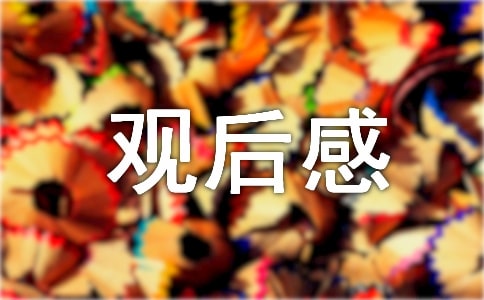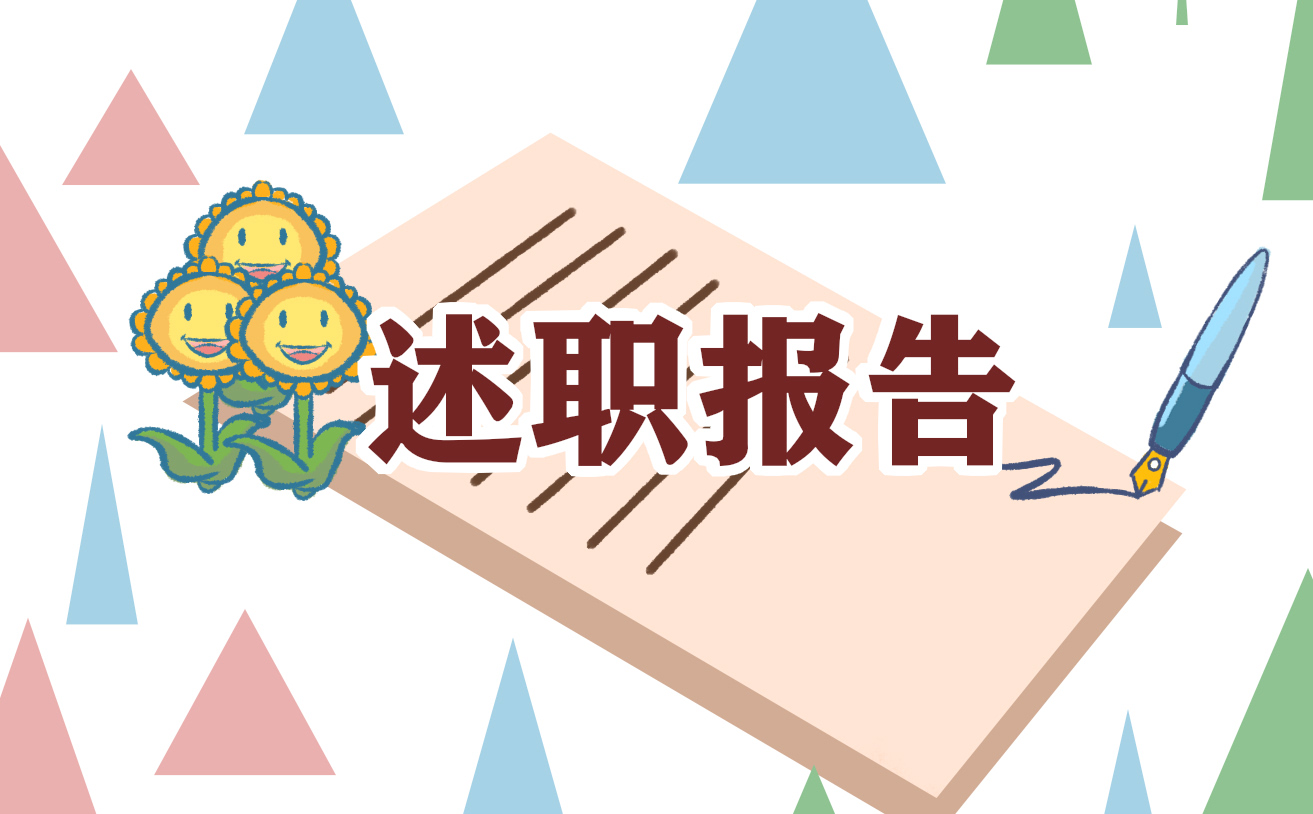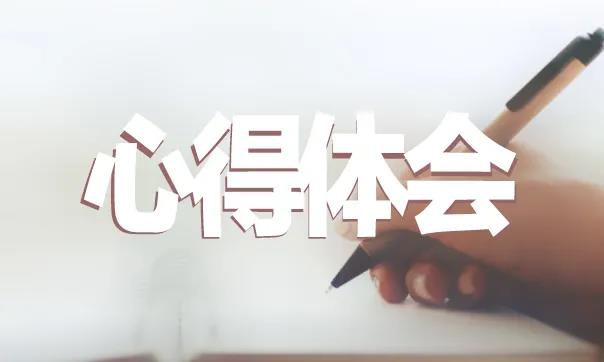统编本初中语文文言文选的文化精神研究4篇统编本初中语文文言文选的文化精神研究 统编本初中语文古诗词教学研究——以延安市实验中学为例学科教学(语文)专业研究生张政指导教师卜岩副教授摘摘要:中下面是小编为大家整理的统编本初中语文文言文选的文化精神研究4篇,供大家参考。

篇一:统编本初中语文文言文选的文化精神研究
本初中语文古诗词教学研究——以延安市实验中学为例学科教学(语文)专业研究生 张政 指导教师 卜岩副教授摘 摘 要:中国是诗词的国度,上下五千年,诗歌作品浩如烟海。先民们借助诗词这一艺术形式抒写自己的内心情志,表达个体的审美价值取向。古典诗词以其纯朴的情感、优美的意境、丰富的意象、深厚的内涵、简洁而又凝练的语言被传唱至今,备受国民青睐。卷帙浩繁的古典诗词作品也蕴含着丰富的语文教学价值,它对于培养学生的高尚道德情操、提升学生的审美情趣、丰富学生的语文积累具有巨大价值。通过对古诗词的学习,可以让我们的语文课堂担负起继承和发扬中华民族优秀文化的重要使命和责任。2017 年义务教育统编教材在全国小学和初中起始年级开始使用,2019 年秋季实现所有年级全覆盖。统编教材全新的编写理念和编写体例,为一线语文教师的课堂教学带来新的挑战。在统编本教材使用的这几年中,也不可避免地存在一定的问题,比如古诗词教学方面,方法单一,效益不高等,我们的语文课堂还没有真正发挥出古诗词教学的价值和作用。基于当前初中语文古诗词教学存在的问题,本文对统编本初中语文古诗词的编写内容和教学模式进行系统研究,通过走访调查的方式探究统编本初中语文古诗词教学现状,并提出针对性的策略,从而进一步提升统编本初中语文古诗词教学的价值,提高学生学习古诗词的兴趣,发展学生的语文能力。本篇论文由绪论部分和正文部分组成,绪论部分交代研究的背景、意义、现状、内容和主要研究方法;正文分为五部分,第一部分介绍统编本初中语文教材编写背景及教材特点;第二部分介绍古诗词教学的理论基础及教学意义;第三部分是对统编本初中语文教材古诗词选文进行统计并分析选文特点;第四部分以延安市实验中学为例,通过问卷调查研究分析古诗词教学的现状,从学生学习和教师教学两方面探究当前初中语文古诗词教学中存在的问题,分析形成问题的原因;第五部分针对目前初中语文古诗词教学存在的问题提出相应的教学策略,为一线教师提供一些参考。关键词:初中语文;古诗词教学;存在问题;优化策略A study on the teaching of ancient Chinesepoetry in junior middle school—— Take Yan"an experimental Middle School for exampleAbstractChina is the country of poetry, up and down the five thousand years, a vast sea ofpoetry. The ancestors expressed their inner feelings and feelings and expressed theirindividual aesthetic value orientation by means of poetry, an art form. Classical poetrywith its simple emotion, beautiful artistic conception, rich images, profound connotation,concise and concise language has been sung so far, by the people of all ages. Thevoluminous classical poetry also contains rich Chinese teaching value, which is of greatvalue in cultivating students"noble moral sentiment, enhancing their aesthetic taste andenriching their Chinese accumulation. Through the study of ancient poetry, we can letour language classroom to carry forward the excellent culture of the Chinese nation andthe important mission and responsibility.In 2017, the compulsory education textbooks will be used at the beginning ofprimary and junior high schools nationwide, and full coverage will be achieved for allgrades in the fall of 2019. The brand-new idea and style of the unified compilation ofteaching materials bring new challenges to the classroom teaching of front-line Chineseteachers. In the past few years when the unified textbook was used, certain problemsinevitably existed, such as the teaching of ancient poems and ci-poems, which had asingle method and low efficiency, our Chinese classroom has not really played theteaching of ancient poetry and the value and role. Based on the existing problems in theteaching of ancient Chinese poetry in junior middle school, this paper makes a systematicstudy on the compiling content and teaching mode of ancient Chinese poetry in juniormiddle school, this paper probes into the present situation of the teaching of ancientChinese poetry and ci-poetry in junior middle school, and puts forward some pertinentstrategies, so as to further promote the value of the teaching of ancient Chinese poetry
and ci-poetry in junior middle school, and increase the interest of students in learningancient Chinese poetry and ci-poetry, developing students"language proficiency.This thesis is composed of the introduction part and the main body part. Theintroduction part explains the background, significance, current situation, contents andmain research methods of the research, the first part introduces the background andcharacteristics of the junior middle school Chinese textbook, and the second partintroduces the theoretical basis and teaching significance of the teaching of ancientpoetry. The third part is the statistics and analysis of the characteristics of the selectionsof Ancient Poems in the junior Middle School Chinese textbook. The fourth part takesthe Yan"an experimental middle school as an example to analyze the present situation ofthe teaching of ancient poems through the questionnaire investigation, this paper probesinto the problems existing in the teaching of ancient Chinese poetry in junior middleschool from the aspects of students"study and teachers"teaching, and analyzes the causesof the problems The fifth part puts forward the corresponding teaching strategy in viewof the present junior middle school Chinese ancient poem teaching existence question,provides some reference for the front-line teacher.Graduate: Zhang Zheng (Subject Teaching of Chinese)Directed by: Associate Prof. Bu YanKeywords: Junior High School Chinese; Ancient Poetry Teaching; existingproblems; optimization strategy
目 录绪 论……………………………………………………………………………………1(一)
研究缘起 …………………………………………………………………………1(二)
研究意义 …………………………………………………………………………2(三)
研究现状 ………………………………………………………………………3(四)
研究内容 …………………………………………………………………………6(五)
研究方法 …………………………………………………………………………6一、 统编本初中语文教材概述…………………………………………………………7(一)统编本初中语文教材编写背景及编写理念 …………………………………………71.落实立德树人根本宗旨 ……………………………………………………………82.践行社会主义核心价值观 …………………………………………………………83.传承优秀文化 ………………………………………………………………8(二)统编本教材编写特点 ………………………………………………………………91.兼顾工具性与人文性 ………………………………………………………………92.注重文化传承,培养核心素养 ……………………………………………………93.提升语文综合能力 ………………………………………………………………10二 、 古诗词教学的理论基础和价值取向………………………………………………11(一)古诗词教学理论基础 ……………………………………………………………111.中国古代诗歌理论 ………………………………………………………………122.语文课程标准的要求 ……………………………………………………………123.建构主义学习理论 ………………………………………………………………13(二)古诗词教学意义 …………………………………………………………………141.有利于学生继承传统文化,提升文化素养 …………………………………………142.有利于提高学生阅读能力,提升思维能力 …………………………………………153.有利于培养学生审美能力,提升综合素养 …………………………………………16三、 统编本初中语文古诗词选文概述………………………………………………17(一)选文统计 ………………………………………………………………………17(二)选文特点 ………………………………………………………………………17
1.选文突出经典性 …………………………………………………………………182.选文风格多样 ……………………………………………………………………193.选文配置均衡 ……………………………………………………………………19四 、 统编本初中语文古诗词教学现状调查……………………………………………21(一)古诗词教学现状调查概况 …………………………………………………………211.调查问卷的设计 …………………………………………………………………212.调查对象的选择 …………………………………………………………………213.调查问卷的发放 …………………………………………………………………21(二)古诗词教学的调查结果分析 ………………………………………………………221.学生问卷的调查结果统计 …………………………………………………………222.教师问卷的调查结果统计 …………………………………………………………25(三)古诗词教学存在的问题 ……………………………………………………………291.学生学习方面 ……………………………………………………………………292.教师教学方面 ……………………………………………………………………30(四)古诗词教学问题产生的 原因………………………………………………………301.学生学习方面 ……………………………………………………………………312.教师教学方面 ……………………………………………………………………31五 、 统编本初中语文古诗词教学优化策略……………………………………………32(一)转变教学观念,提升专业素养 ……………………………………………………321.转变教学观念 ……………………………………………………………………322.加强学习,提升专业素养 …………………………………………………………32(二)创新教学模式,提高教学效果 ……………………………………………………331.营造氛围,整体感知 ………………………………………………………………332.重视诵读,培养语感 ………………………………………………………………343.借助意象,挖掘意蕴 ………………………………………………………………344.合作探究,培养语文能力 …………………………………………………………355.丰富教学手段,提高教学效果 ……………………………………………………36(三)以生为本,体现学生主体地位 ……………………………………………………371.增强学习动力 ……………………………………………………………………37
2.提升综合能力 ……………………………………………………………………37结语………………………………………………………………………………39参考文献………………………………………………………………………………40附录 一………………………………………………………………………………43附录 二………………………………………………………………………………45附录 三………………………………………………………………………………46致谢………………………………………………………………………………49攻读硕士期间研究成果………………………………………………………………50
统编本初中语文古诗词教学研究——以延安市实验中学为例- 1 -统编本初中语文古诗词教学研究——以延安市实验中学为例绪 论(一)研究缘起近年来,随着中国文化软实力的不断增强和文化自信的不断提升,中国传统文化教育成为语文教育教学中的重中之重。相应地,初中语文古诗词教学也成为了中学语文教学中的重点板块,通过对古诗词进行赏析、诵读,能够让学生对中国传统古诗词文化进行更加深入地了解,从而培养他们的中华优秀传统文化素养,提升学生对于审美艺术的掌握能力,同时对于提高初中生的语文阅读能力也很有作用。1.落实“立德树人”根本宗旨的需要立德树人是教育的根本任务,这就要求教育事业不仅要向学生传递知识、培养能力,同时更应该将社会主义核心价值观...
篇二:统编本初中语文文言文选的文化精神研究
类 号 G 6 3 3. 3 密 级公 开 学 号 1 7 0 7 1 3 一 ■ ■ ■ 硕士 学 位 论 文 ( 专 业 学 位) 题 目 统 编 本 初 中 语 文 教 材 古 诗 文 选 篇 的 传 统 文 化 研究 作 者 张 雪 梅 指 导 教 师 李 军亮 专 业 学 位 类 别 教 育 硕士 专 业 学 位 领 域 学 科 教 学( 语 文 )
提 交 日 期 二〇一九 年 五 月
学 位 论 文 原 创性 声 明 本 人 声 明 所 呈 交 的 学 位 论 文 是 我 在 导 师 的 指 导 下 进 行 研 究 工 作所 取 得 的 研 宄 成 果。
尽 我 所 知 ,除 文 中 已 经 注 明 引 用 的 内 容 和致 谢 的 地 方 外 , 本 论 文 不包 含 其 他个人 或 集 体 已 经 发 表 或 撰 写 过 的 研 宄 成 果, 也不 包 含 本 人 或 他 人 已 申 请 学 位 或 其 他 用 途 使 用 过 的 成 果。
对 本 文 的 研 究 做 出 重 要 贡 献 的 个 人 和 集 体, 均 己 在 文 中 作 了 明 确说 明 并 表示谢 意 。
本 学 位论 文 若 有 不实 或者 侵 犯 他 人 权 利 的 , 本 人 愿意 承 担一 切 相关 的 法 律 责 任。
作 者 签 名:
说 % ^ 4-曰 期:
>丨)年_ r月曰 学 位 论 文 知 识 产权 及 使 用 授 权 声 明 书 本 人 在 导 师 指 导 下 所完 成 的 学 位 论 文 及 相 关成 果, 知 识 产 权 归 属 陕 西 师 范 大 学。
本 人 完 全 了 解 陕 西 师 范 大 学 有 关 保 存 、使 用 学 位 论 文 的 规 定 , 允 许 本 论 文 被 査 阅 和 借 阅, 学 校有权保 留 学 位 论 文 并 向 国 家 有关 部 门 或 机 构 送 交 论 文 的 纸 质 版 和 电 子 版 , 有权 将本 论 文 的 全 部 或 部 分 内 容 编 入有 关 数 据 库 进 行检 索 , 可 以 采 用 任何复 制手 段 保 存 和 汇 编本论 文。
本 人 保 证 毕 业 离 校 后, 发表 本 论 文 或 使 用 本 论 文 成 果 时署 名 单 位仍 为 陕 西 师 范 大 学。
保 密 论 文 解 密 后 适 用 本 声 明。
作 者 签 名:
曰 期 :如丨,年r月 曰
摘 要 中 华 民 族 发 展 至 今 仍 然 屹 立 于 世 界 民 族 之 林, 根 基 在 于 五 千 年 来 连 绵 不 断 、 博大 精 深 的 文化 滋 养。
党 和 国 家 高度 重 视 中 华 传统 文 化 教 育,多 次 召 开 会 议 强 调 传 统文 化 教 育 问 题^ 2 0 1 4 年 3 月 , 国 家 教 育 部 颁 布 《 完 善 中 华 优 秀 传统 文 化 教 育 指 导 纲 要 》( 教 社 科 [ 2 0 1 4 ] 3 号 )
, 提 出 要 加 强 中 华 传 统文 化 教 育 。
教 育 部 组 织 编 写 的 义 务 教 育 语 文 教 科 书, 于 2 0 1 6 年 9 月 正 式 开 始 投 入 使用 , 逐 步 取 代 了 教 科 书“一 纲 多 本”的 情 况。
统 编 本 教 材 贯 彻 了 中 央 的 相 关 指 示 , 体 现 国 家 意 志 , 重 视 传 统 文 化 教 育, 增 加 了 传 统 文 化 内 容 比 重 。
本 文 通 过 对 统 编 本 古 诗 文 选 篇 体 现 的 传 统 文 化 进 行 统 计 分析, 为一线 教师 更 好 地 利 用 新 教 材 进 行 传 统 文 化 教 育 提 供 学 理 上 的 帮 助。
依 据 文 化 的 含 义和 教 材 实 际 , 借 鉴 文 化 分 类 说 的 观 点, 笔者 将 古 诗 文 选 篇 所蕴 含 的 文 化 分为 物 态 文 化、行 为 文 化、 制 度 文 化 和 精 神 文 化 四 种 类 型, 并 根 据 以 上 分 类 对 古 诗 文 所 蕴 含 的 文 化 进 行 逐 条 细 化 分 析。
根 据 分 析 所 得 结 论 , 试 图 对 统 编 本古 诗 文 提 出一定 的 选 编 建 议, 并 探 讨 基 于 文 化 传 承 的 古 诗文 教 学 策 略。
本 文 主 要 分 为 四 个 章 节 :
第一章 为 引 言。
对 本 研 宄 的 选 题 缘 由、 意 义 以 及 研 宄现 状 进 行 简 要 的 概 括 。
对 本文 涉 及 的 相 关 概 念 进 行 界 定。
第 二 章 探 讨 统 编 本 古 诗 文 中 蕴含 的 物 态 文 化、行 为 文 化、 制 度 文 化 。
经 过 分 析 发 现, 统 编 木 古 诗 文 屮 蕴 含 着 丰 富 的 有 形 文 化, 具 体 体 现 / H 山 诗 文 蕴 含 的 古 代 文 学 文 化、古 代 艺 术 文 化、 古 代 民 俗 文 化 、 古 代 制 度 文 化。
第 三 章 探 讨 统 编 本 古 诗 文 蕴 含 的 精 神 文 化。
重 点 分 析 统 编本 古 诗 文 中 蕴 含 的 古 代价 值 观 念、 思 维 方 式 、 审 美 情 趣 。
古 诗 文 在价 值 取 向 上 重 视 个 体 感 受 , 鼓励 个 体 积 极 向 上、拼 搏 努 力, 同 时 也 鼓 励个 体 关 心 国 家和 社 会。古 诗文 中 体 现 出 中 国 传统 的 崇 尚 整 体 统一、 直 觉 体 悟 的 思 维 方 式 和 含 蓄 唯 美 的 艺 术 境 界 , 所 以 古 诗 文 教学 要 引 导 学 生 注重 体 验与 感 悟。
第 四 章 笔 者 对 统编 本 古 诗 文 提 出一定 的 选 编 建 议,并 探讨 古 诗文 教 学 策 略。
基 于 文 化 传 承 的 古 诗 文 选 编 应 当 既 重 视 传 承“雅”文 化 , 也 不 可 忽 视“俗”文 化 ; 倡 导 积 极 情 感 态 度, 合 理 引 导 消 极 情 感 态 度 ; 适 当 增 加 体现 质 疑、 探 索 、 创 新 精 神 的 篇 章。
对 于 古 诗 文 教 学 , 则 试 图 探 讨一种 更 合 理 的 教 学 模 式,即 通 过 体 验 式 教 学 法 让 学 生 亲 历 文 化 的 魅 力, 通 过 对 话 式教 学 法 引 导 学 生 感悟 、 品 味 诗 文 的 精 神 文 化。
]
第 五 章 为 结 论。
关 键 词:统 编 本, 初 中 语 文 教材 , 古 诗 文 , 传统 文 化 I I
A b s t r a c t T h e d e v e l o p m e n t o f t h e C h i n e s e n a t i on i s s t i l l i n t he w o r l d's e t h n i c f o r e s t , b a s e d o n f i v e t h o u s a n d y e ar s o f c o n t i n u o u s t r a d i t i o n a l c u l t u r e . T h e g o v e r n m e n t e m p h a s i z e d t h e i m p o r t a n ce o f t r a d i t i on a l C h i n e s e c u l t u r e e d u c a t i o n t h r o u g h t h e c on v e n i n g o f n u m e r o u s m e e t i n g s . I n M a r c h 2 0 1 4, t h e mi n i s t r y o f e d u c a t i o n i s s u e d a l a w c a l l e d t h e o u t l i n e o f i m p r o v i n g e d u c at i on i n t r a d i t i on a l C h i n e s e c u l t u r e . T h e d o c u m e n t c a l l s f o r m o r e C h i n e s e t r a d i t i o n a l c u l t u r e e d u c a t i o n . N e w l an g u a g e t e x t b o o k s c o m p i l e d b yt h e M i n i s t r y o f E d u c a t i o n h a s b e e n p u t i n t o u s e i n S e p t e m b e r 2 0 1 6 , I t r e p l a ce d t h e t e x t bo o k s o f t h e p a st . T h e n e w t e x t b oo k s r e f l e c t t h e i n t e r e s t s o f t h e g o ve r n m e nt, a n d i n c r e a s e t h e p r o p o rt i o n o f C h i n e s e t r a d i t i on a l c u l t u r e e du c a t i on . A c c o r d i n gt o t h e s t a t i s t i c a l an a l y s i s o f t h e t radi t i o n a l c u l t u r e e m b o d i e d i n t h e s e l ec t i o n o f t h e a n c i e n t p o e m s a n d a r t i c l e s i n t h e n e w t e a c h i n g m at e r i a l, t hi s p a p e r p r o vi d e s t h e t h e o r e t i c a l h e l p f or t h e f r o n t-l i n e t e ac he r s t o m a k e u s e o f t h e n e w t e a c h i n g m a t e r i a l t o c arry on t h e t r a d i t i on a l c u l t u r e e d u c a t i on . A c c o r d i n gt o t h e m e an i n g o f c u l t u r e an d t h e r e a l i t y o f t e a c h i n g m a t e r i a l s, t h e a u t h o r di v i d e s t h e c u l t u r e c on t a i n e d i n t h e s e l e c t e d a n c i e n t p o e m s i n t o f o u r t y p e s : p h y si ca l c u l t u r e, b e h a vi o r a l c u l t u r e, i n s t i t u t i o n a l c u l t u r e a n d s p i r i t u a l c u l t u r e, r e f e rri n gt o t h e p o i n t o f v i e w o f c u l t u r e c l a s s i f i c a t i o n . A c c o r d i n gt o t h e a b o v e c l a s s i f i c a t i o n o f c u l t u r e, t h e a u t h o r m a ke s a n a r t i c l e- by- a rt i c l e an a ly si s o f t h e c u l t u r e c o n t a i n e d i n a n c i e n t p o et r y a n d p r o s e . F i n a l l y, t h e au t h e r p ut s f o r w a r d s o m e s u g g e s t i o n s o n t h e s e l e c t i o n a n d c o m p i l a t i o n o f a n c i e n t p o et r y a n d pr o s e i n t h e t e a c h i n g s t r a t e g i e s o f an c i e n t p o et r y a n d p r os e b a s e d o n c u l t u r a l i n h e r i t a n c e . T h i s a r t i c l e i s d i v i d e d i n t o f ou r c h a p t e r s :
T h e f i r s t c h a p t e r i s t h e i n t r o d u c t i o n . T h i s p a p e r b r i e f l y s u mm a r i z e s t h e r e a s o n, s i g n i f i c an c e a n d r e s e a r c h s t a t u s o f t h i s r e s e a r c h, d e fi n e d t h e r e l e v a n t c o n c e p t s i n v o l v e d i n t h i s p a p e r. T h e s e c o n d c h a p t e r d i s c u s s e s t h e m a t e r i a l c u l t u r e, b e h avi o r c u l t u r e a n d s y s t e m c u l t u r e c o n t a i n e d i n t h e a n c i e n t p o e t r y o f t h e n e w t e x t b oo k. A f t e r a n a ly si s, t h e a u t h o r f i nd s th a t t h e a n c i e n t p o et r y o f t h e n e w t e x t b o o k c o n t a i n s a w e a l t h o f t a n g i b l e c u l t u r e, w h i c h i s s p e c i f i c a l l y w i t h d r a w n f r o m a n c i e n t l i t e r a t u r e a n d c u l t u r e, an ci e n t a r t c u l t u r e, a n c i e n t f o l k c u l t u r e a n d an c i e n t i n s t i t u t i o n a l c u l t u r e . i n
T h e t h i r d c h a p t e r d i s c us se s t h e s p i r i t u a l c u l t u r e c o n t a i n e d i n t h e c o m p i l a t i o n o f a n c i e n t p o e ms a n d e s s a y s . T h i s c h a p t e r f o c u s e s o n t h e a n a l y s i s o f t h e va l u e c o n c e p t, t h i n k i n g m o d e a n d a e s t h e t i c t a s t e c o n t a i n e d i n t h e n e w t e x t b o o k s . A n c i e n t p o e m s a n d e s s a y s a tt a c h g r e a t i m p o r t an c e t o i n d i v i d u a l f e e l i n g s i n t e r m s o f v a l u e o r i e n t a t i o n, e n c o u r a g e i n d i v id ua l s t o b e p o si t i v e a n d s t r i v e h a r d, a n d a t t h e s a m e t i m e e n c o u r a g e i n d i v i d u a l s t o c a r e a b o u t t h e c o u n t r y a n d s o ci e t y . I n t h e f o u r t h c h a p t e r , t h e au th or p ut s f o r w a r d s o m e s u g g e s t i o n s on t h e s e l e c t i o n an d c o m p i l a t i o n o f a n ci e n t p o e t r y a n d p r o s e, a n d p r o b e s i n t o t h e t eac h i n g s t r a t e g i e s o f a n c i e n t p o et r y an d p r o s e. T h e s e l e c t e d a n c i e n t p o e ms a n d e s s a y s b a s e d o n c u l t u r a l i n h e r i t a n c e sh ou l d n o t o n l y p a y a tt e nt i o n t o i n h e r i t i n g t h e 'e l e g a n t5 c u l t u r e, b u t a l s o s h o u l d no t i g n o r e t h e 'v u l g a r5 c u l t u r e . A d v o c a t e p o si t i v e e m o t i o na l a t t i t u d e, r ea s o n a bl y g ui d e n e g a t i v e e m o t i o n a l a t t i t ud e, a pp r o p r i at e i n c r e a s e c a s h w i t h d r a w a l q u es t i o n i n g, e x p l o r a t i o n, i nn o v a t i v e s p i r i t o f t h e c h a p t e r . F o r t h e t e a c h i n g o f a n c i e n t p o et r y, t h e a u t h o r t r i e s t o e x p l o r e a m o r e r e a s on a b l e t e a c h i n g m o d e , t h a t i s, t h r o u g h t h e e x p e ri e n t i a l t e a c h i n g m e t hod t o l e t s t u d e n t s e x p e r i e n c e t h e c h a r m o f c u l t u r e, t h r o u g h t h e di a l o g u e t e a c h i n g m et h o d t o g ui d e s t u den t s t o t a s t e t h e s p i r i t ua l c u l t u r e o f an c i e n t p o et r y a n p r o s e. T h e f i f t h c h a p t e r :
S u m m a r y . K e y w o r ds :
M i n i s t r y c o m p i l a t i o n, J u ni o r m i d d l e s c h o o l C h i n e s e t e a c h i n g m at e r i a l, a n c i e n t C h i n e s e p o e ms, T r a di t i o n a l c u l t u r e I V
目 录 摘 要 I A b s t r a c t I l l 第1 章引 言 1 1 . 1 选 题 缘 由 1 1 . 1. 1古 诗 文 教 学 忽 视 文 化 传 承 教 育 1 1 . 1 . 2 党 中 央 高度重 视 中 华 传 统 文 化 教 育 2 1 . 1 . 3 统编 本 教 材 在 古 诗 文 选 编 上 做 出 新 的 改变 3 1 . 2 选 题 意 义 3 1 . 2 . 1 促进 古 诗 文教 学 的 升 华 3 1 . 2 . 2 促进 中 华 传 统 文 化 的 传 承 与 理 解 3 1 . 3 文 献 综 述 4 1 . 3 . 1 对 于 统 编 本 语 文 教 材 的 研 宄 4 1 . 3 . 2 对 于 语 文 教 育 与 文 化 传 承 关 系 的 研 宄 5 1 . 3 . 3 对 于 古 诗 文 教 学 的 研 宄 6 1. 4 概 念 界 定 7 1 . 4 . 1 古 诗 文 7 1 . 4 . 2 中 华 传 统 文 化 7 1 . 4 . 3 文 化 分 类 8 1 . 5 研 究 方 法13 创 新 点 8 1 . 5 . 】
研 宄 方 法 8 1 . 5 . 2 创 新 点 9 第2 章统 编 本 古 诗 文 选篇 蕴 含的 物 态 文 化、 行 为 文 化 、 制 度 文 化 分 析 1 1 2 . 1 统 编 本 古 诗 文选 篇 蕴 含 的 物态 文 化 分 析 1 1 ...
篇三:统编本初中语文文言文选的文化精神研究
号:G643.8 单位代码:
10451密 级:
公开 学 号:
2018210026专 专 业 业 硕 硕 士 士 学 学 位 位 论 论 文语文核心素养视域下统编本初中文言文教学策略研究作 者 姓 名 孙晓彤学 习 方 式 非全日制第一导师姓名职称 志 黄修志 教授第二导师姓名职称 华 孙忠华 中学高级语文教师学 位 类 别 名 称 教育硕士专 业 领 域 名 称 学科教学(语文)日 论 文 答 辩 日 期 1 2021 年 年 5 5 月 0 30 日答 辩 委 员 会 主 席 如 王意如 教授
鲁东大学硕士学位论文语文核心素养视域下统编本初中文言文教学策略研究作者姓名:
孙晓彤第一导师:
黄修志 教授第二导师:
孙忠华 中学语文高教师学位类别:
教育硕士专业领域:
学科教学(语文)鲁东大学文学院二○二一年六月
AThesis Submitted to Ludong Universityfor the Degree of MasterStudy on Teaching Strategies ofChinese Language from thePerspective of Chinese CoreLiteracyM.D.Candidate:
Sun XiaotongThe first supervisor:
Huang XiuzhiThe second supervisor:
Sun zhonghuaCategory of degree:
Master of EducationField of research:
Subject Teaching(Chinese)School of LiberalArts, Ludong UniversityJune ,2021
学位论文原创性声明和使用授权说明学位论文原创性声明本人郑重声明:所呈交的论文是本人在导师的指导下独立进行研究所取得的研究成果。除了文中特别加以标注引用的内容外,本论文不包含任何其他个人或集体已经发表或撰写的成果作品。对本文的研究做出重要贡献的个人和集体,均已在文中以明确方式标明。本人完全意识到本声明的法律后果由本人承担。作者签名:
日期:2021 年 6 月 3 日学位论文版权使用授权书本学位论文作者完全了解学校有关保留、使用学位论文的规定,同意学校保留并向国家有关部门或机构送交论文的复印件和电子版,允许论文被查阅和借阅。本人授权 鲁东大学 可以将本学位论文的全部或部分内容编入有关数据库进行检索,可以采用影印、缩印或扫描等复制手段保存和汇编本学位论文。本学位论文属于保密□,在 年解密后适用本授权书。不保密□√ 。(请在以上相应方框内打“√”)作者签名:
日期:
2021 年 6 月 3 日导师签名:
日期:
2021 年 6 月 3 日
I摘要文言文是我国传统文化的结晶,是历经朝代更迭、时态变换所遗留下的文化瑰宝,被选入教材中的篇目更是经过专家层层选择、审核之后,进而确定的适合学生欣赏品读的优秀作品。文言文教学可以带学生漫游在诗歌殿堂里,与千百年前的优秀人物对话,感受他们的品德与智慧,进而培养崇高的爱国主义情怀和审美情趣,传承优秀的传统文化。2014 年 3 月,教育部印发《关于全面深化课程改革落实立德树人根本任务的意见》中提出要制定“学生发展核心素养体系”;《普通高中语文课程标准(2017 年版)》中明确规定了语文核心素养的内涵包括:语言建构与运用、思维发展与提升、审美鉴赏与创造、文化传承与理解四个方面的内容。本文从“语文核心素养”视角出发,从培养学生素养为主要目标,依托统编版语文教材来探讨初中文言文教学的策略,期望能通过研究,为在中学语文教学中落实培养学生的语文核心素养提供一点方法的借鉴。本文分为四章:第一章通过研究大量文献分析界定语文核心素养在初中阶段的体现,并探究与文言文教学的关系。语文核心素养是核心素养在语文学科的具体化,是通过语文教学培养学生所要达到的素养目标,初中是衔接小学和高中的桥梁,是由依赖走向独立的过渡时期。小学阶段的学生主要依赖教师的约束,高中的学习全凭个人的学习自觉性,初中的作用就是逐步培养学生的自学能力和自学意识,帮助学生建构起自学应具备的各项能力。其所应达到的素养水平应该介于小学和高中之间,根据其年龄和认知特点归纳总结出初中生应达到的语文核心素养,分别从语言、思维、审美和文化四个方面简要说明初中生应达到的水平。学生语文核心素养培养的主阵地就是课堂教学,而文言文教学在中学阶段具有重要地位,因此,学生语文核心素养的形成离不开文言文的教学。同时,学生在学习文言文的过程中又能促进其语文核心素养的形成。第二章主要研究在统编本教材中语文核心素养体现在哪些方面。教材一头连接着教师,一头连接着学生,是承载教学内容的主要载体,是教师和学生之间的桥梁,研究分析教材是教师教学的第一步。统编教材又是在总结其他各种教材的
II基础上,去粗取精,重新编排出的适合学习学和教师教的新教材。统编教材中以培养学生的素养为关键点,在单元导读中明确告知了本单元的语文要素,这就是一个单元的教学重点,除此之外,在教材的环节编排上也有自己的创新之处,本章节对教材分为预习提示、选文、思考探究、积累拓展四个方面进行分析,归纳总结出其中语文核心素养的体现。第三章立足教学对统编语文教材初中文言文教学现状调查分析。根据教学实例和访谈调查发现目前初中文言文教学中语文核心素养落实不到位之处,比如在预习时没有将课本上的预习提示完成到位,学生没有在学习之初建立起对文言文的建构;课文教学时对文中的意象分析不深入,学生审美能力提高缓慢;处理课后探究题时留给学生思考的时间不足,学生思维没有得到全面的发展等,本章节教学中出现的相关问题进行归纳总结。第四章针对教学中出现的问题,结合语文核心素养的要求提出文言文的教学策略。根据教材顺序分别从预习、选文、思考探究和积累拓展四个方面提出了在教学时应注意的培养语文核心素养的关键点,并总结了相应的教学策略,为一线教师教学提供一定的参考。关键词:初中语文核心素养,统编本,文言文教学
IIIAbstractClassical Chinese is the crystallization of China"s traditional culture. It is acultural treasure left by the change of dynasties and tense. The articles selected in thetextbook are excellent works suitable for students to appreciate and read afterdetermined by the selection and examination by experts. The teaching of classicalChinese can take students to wander in the palace of poetry, talk with excellent figuresthousands of years ago, feel their moral character and wisdom, and then cultivate loftypatriotism and aesthetic taste, and inherit excellent traditional culture. In March 2014,the Ministry of Education issued the Opinions on Comprehensively Deepening theCurriculum Reform and Implementing the Basic Task of Moral Cultivation (2017 )and defined the contents of Chinese core literacy: language construction andapplication, thinking development and promotion, aesthetic appreciation and creation,cultural inheritance and understanding.This paper starts from the perspective of "Chinese core literacy" , from thecultivation of students "literacy as the main goal, relying on the unified compilation ofChinese textbooks to discuss the strategy of junior high school Chinese teaching,hoping to provide a reference for the implementation of students" core literacy inmiddle school Chinese teaching.This article is divided into four chapters:The first chapter defines the embodiment of Chinese core literacy in the stage ofjunior high school, and explores the relationship with classical Chineseteaching.Chinese core literacy is the embodiment of core literacy in Chinesediscipline, which is the literacy goal that students should achieve through Chineseteaching. High school is the bridge between primary school and high school, and thetransition period from dependence to independence.Students in primary school mainlyrely on the constraints of teachers, and the study of high school is all based onpersonal learning consciousness. The role of junior high school is to graduallycultivate students" self-study ability and self-study consciousness, and help studentsconstruct the abilities that self-study should have.The literacy level it should achieveshould be between primary school and high school. According to its age and cognitive
IVcharacteristics, the core Chinese literacy of junior high school students should besummarized, and the level of junior high school students should be briefly explainedfrom four aspects of language, thinking, aesthetic and culture respectively.The mainposition of the cultivation of students "core literacy is classroom teaching, andclassical Chinese teaching plays an important role in middle school. Therefore, theformation of students" core Chinese literacy cannot be separated from the teaching ofclassical Chinese.At the same time, students can promote the formation of their coreChinese literacy in the process of learning classical Chinese.The second chapter mainly studies the aspects of the core Chinese literacyreflected in the unified textbook.Textbooks connect teachers at one end and studentsat the other. It is the main carrier carrying teaching content and a bridge betweenteachers and students. Research and analysis of textbooks is the first step of teachers"teaching.Unified compilation of the teaching materials is on the basis of summarizingvarious other teaching materials, to get rough and fine, and rearrange the newteaching materials suitable for learning and teachers" teaching.Unified teachingmaterials to cultivate students"s literacy as the key point, in the unit guide clearlyinformed the Chinese elements of this unit, this is a unit of teaching focus, in addition,in the teaching material arrangement also has their own innovation, this chapter of thetextbook is divided into preview tips, selection, thinking, accumulation and expandfour aspects of analysis, summarizes the embodiment of the Chinese core literacy.Chapter III Based on the investigation and analysis of the current situation ofunified Chinese textbooks.According to the teaching examples and interview survey,the core Chinese literacy in junior high school is not in place, such as the absence ofthe preview, the lack of image analysis of the text, the aesthetic ability is slow, thelack of time for students to think and the comprehensive development, and summarizethe relevant problems in the teaching of this chapter.Chapter IV presents the teaching strategy in the light of Chinese coreliteracy.According to the order of teaching materials, it put forward the key points ofcultivating the core Chinese literacy in teaching from four aspects of preview, textselection, thinking and accumulation and expansion, and summarized thecorresponding teaching strategies to provide certain reference for the teaching of
Vfront-line teachers.Key words:Core Chinese Literacy in Junior Middle School , unified compilation,classical Chinese teaching
VI目录摘要.................................................................................................................................IAbstract........................................................................................................................ III绪论................................................................................................................................1第一章 初中语文核心素养与文言文教学..................................................................7一、语文核心素养与初中语文核心素养....................................................................7二、语文核心素养与文言文教学................................................................................9第二章 语文核心素养在统编本初中语文教材中的体现......................................14一、预习提示中的语文核心素养..............................................................................15二、课文中的语文核心素养.......................................................................................
篇四:统编本初中语文文言文选的文化精神研究
士 学 位 论 文论文题目:部编版初中语文教材文言文选文及教学研究分类号G633.3 密 级 公开学 号20183113083研究生姓名 武星导师姓名(职称)李春玲 教授专业学位类别 教育硕士学 习 方 式 全日制专业领域名称 学科教学(语文)论文提交日期 2020 年 5 月 论文答辩日期 2020 年 5 月学位授予单位 青海师范大学 学位授予日期 2020 年 6 月答辩委员会主席 李子华评 阅 人 吕彬,李子华,马梦玲万方数据
万方数据
I部编版初中语文教材文言文选文及教学研究中文摘要语文教材是语文课程最主要的课程资源,是教学的基础和主要对象,语文教学的开展离不开教材,教材质量的高低直接影响到教育结果。因此,初中语文教材文言文的选文既是初中文言文教学的主要内容,选文的质量优劣更是对教学有着深远的影响。通过研究部编版初中语文教材文言文选文的情况,总结归纳其特点,通过调查问卷调查文言文教学现状,观察教学课堂,访谈一线语文教师,从中发现文言文教学存在的问题,并针对问题提出教学策略,为教育工作者实现从“教教材”到“用教材教”的转变提供可行性建议。本文以部编版初中语文教材为主要研究对象,通过文献分析法、统计分析法、比较研究法、调查研究法,对比部编版与人教版初中语文教材文言文的选文情况,总结归纳部编版初中文言文选文特点,调查研究当前的文言文教学现状,结合教材提出合理具有可操作性的教学策略。本文共分为四章:第一章介绍部编版初中文言文选文的指导思想,阐述文言文的教育价值、文化价值以及艺术价值,并指出文言文教学有利于继承传统文化,有利于提高中学生的语言文学素养,有利于学生的思想道德教育,有利于学生了解古今汉语的渊源。第二章通过统计分析部编版初中语文教材文言文选文数量、朝代、体裁和主题的情况,与人教版初中语文教材进行对比,分析部编版文言文选文的特点。部编版初中语文教材在整体选文数量减少的情况下,文言文所占比重并未明显降低,七至九年级选文难度缓步增长,选文朝代以先秦居多,除明清之外,其他朝代分布较为均匀,体裁以杂记文为主,主题主要为智慧思想、品德修养和家国情怀三个方面。第三章采用问卷调查的方式对初中阶段的学生及教师文言文教学现状进行调查,统计数据,分析归纳所发现的问题。第四章主要针对上述所发现的文言文教学问题,结合部编版选文情况,提出合理的教学建议。关键词:部编版,初中语文教材,文言文,教学研究万方数据
IIThe junior middle school Chinese textbooksselected and edited by the Ministry of EducationAbstractChinese teaching materials are the most important curriculum resources ofChinese courses, and they are the foundation and main object of teaching. Thedevelopment of Chinese teaching cannot be separated from teaching materials. Thequality of teaching materials directly affects the educational results. Therefore, theselection of classical Chinese textbooks for junior high school Chinese textbooks isnot only the main content of junior Chinese language teaching, but the quality ofselected texts has a profound impact on teaching. Through the research department"scompilation of the text selection of junior middle school Chinese textbooks,summarize their characteristics, survey the status quo of classical Chinese teachingthrough questionnaires, observe teaching classrooms, interview front-line Chineseteachers, find problems in classical Chinese teaching, and propose teaching strategiesbased on the problems. To provide feasible suggestions for educators to achieve thetransition from "teaching materials" to "teaching with materials".This article focuseson the edition of junior high school Chinese textbooks compiled by the ministry.Through literature analysis, statistical analysis, comparative research, and researchmethods, this paper compares the selection of the texts of the junior high schoolChinese textbooks compiled by the ministry and the human education edition. Thecharacteristics of selected Chinese texts in the early edition of the edition, investigatethe current status of classical Chinese teaching, and propose reasonable and operableteaching strategies in combination with textbooks.This article is divided into four chapters:The first chapter introduces the guiding ideology of the selection of classicalChinese texts, explains the educational value, cultural value, and artistic value ofclassical Chinese texts, and points out that classical Chinese teaching is conducive toinheriting traditional culture, and is conducive to improving the language and literacyof middle school students. Ideological and moral education will help studentsunderstand the origin of ancient and modern Chinese.The second chapter compares with the junior high school Chinese textbook万方数据
IIIedition, dynasty, genre and theme of the junior high school Chinese textbookcompiled by the Statistics and Analysis Department, and compares it with the People"sEducation Edition junior high school Chinese textbook. In the case of the juniormiddle school Chinese textbooks edited by the Ministry, the proportion of classicalChinese texts has not decreased significantly. The difficulty of selecting texts ingrades 7-9 is gradually increasing. The distribution of the dynasties was relativelyeven, and the genre was dominated by miscellaneous essays. The main themes werethree aspects: wisdom thought, moral cultivation and family feelings.The third chapter uses questionnaires to investigate the current situation ofstudents "and teachers" teaching of classical Chinese in the middle school stage,statistical data, and analysis of the problems found.The fourth chapter mainly aims at the problems of classical Chinese teachingdiscovered above, and puts forward reasonable teaching suggestions based on theedition selection of the department.Key words: Department edition, junior high school Chinesetextbook, classical Chinese, teaching research万方数据
IV目 录中文摘要........................................................................................................................IAbstract......................................................................................................................II绪 论............................................................................................................................1一、研究缘起..................................................................................................1二、研究现状..................................................................................................2三、研究目的及意义......................................................................................4四、研究方法..................................................................................................6第一章 部编版初中语文教材文言文选文的依据及教学价值................................7第一节 部编版初中语文文言文选文的指导思想...............................................7一、弘扬传统文化..........................................................................................7二、落实“立德树人”..................................................................................7三、体现多元审美..........................................................................................8第二节 文言文的教学价值...................................................................................9一、文言文的教育价值和陶冶功能..............................................................9二、文言文的文化价值和认识功能..............................................................9三、文言文的艺术价值和发展功能............................................................10第三节 文言文的教学意义.................................................................................10一、有利于继承和弘扬传统文化................................................................10二、有利于提高中学生的语言文学素养....................................................11三、有利于对中学生进行思想品德教育....................................................11四、有利于学生了解文言文与现代汉语的关系........................................12第二章 部编版初中语文教材文言文选文的特点..................................................13第一节 文言文选文数量和所占比重的统计分析.............................................13一、文言文选文数量及比重的统计............................................................13二、文言文选文数量及比重的特点............................................................13第二节 文言文选文的朝代分析.........................................................................15一、文言文选文朝代的统计........................................................................15二、文言文选文朝代的特点........................................................................15第三节 文言文选文的体裁分析.........................................................................16一、文言文选文体裁的统计........................................................................16二、文言文选文体裁的特点........................................................................17第四节 文言文选文的主题分析.........................................................................18一、文言文选文主题的统计........................................................................18万方数据
V二、文言文选文主题的特点........................................................................19第三章 部编版初中语文文言文教学现状的调查及分析......................................20第一节 初中语文文言文教学现状调查设计.....................................................20一、调查目的................................................................................................20二、调查对象................................................................................................20三、调查方法及工具....................................................................................20四、调查结果................................................................................................20第二节 初中语文文言文教学现状的调查结果及分析.....................................21一、对文言文教学的认识和态度................................................................21二、文言文的学习方法和教学方法............................................................24三、文言文的教学评价................................................................................24第三节 文言文教学现存问题.............................................................................31一、学生学习文言文存在的问题................................................................31二、教师文言文教学存在的问题................................................................32第四章 部编版初中语文文言文教学建议..............................................................35第一节 对教师备课的建议..................................................................................







